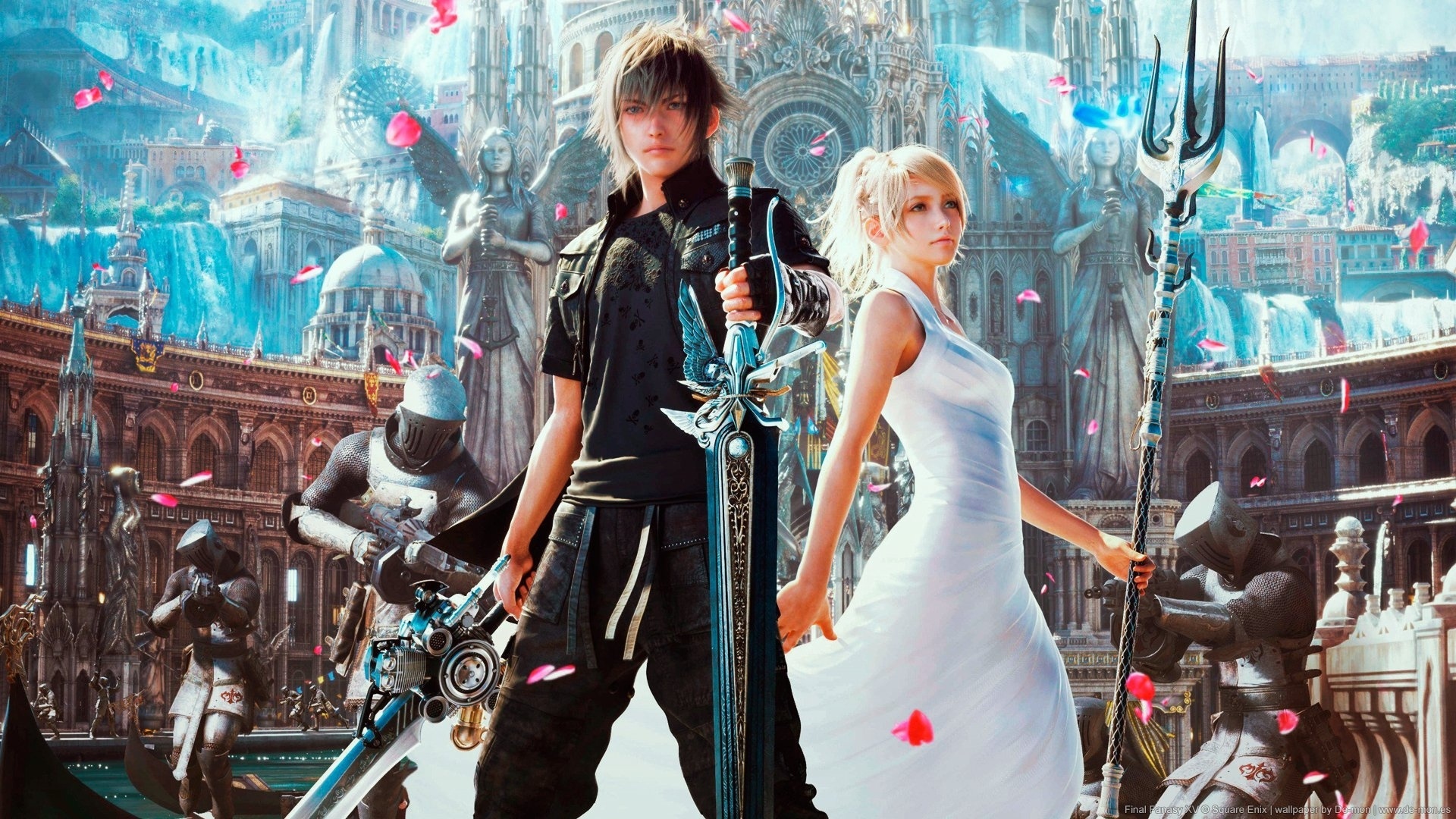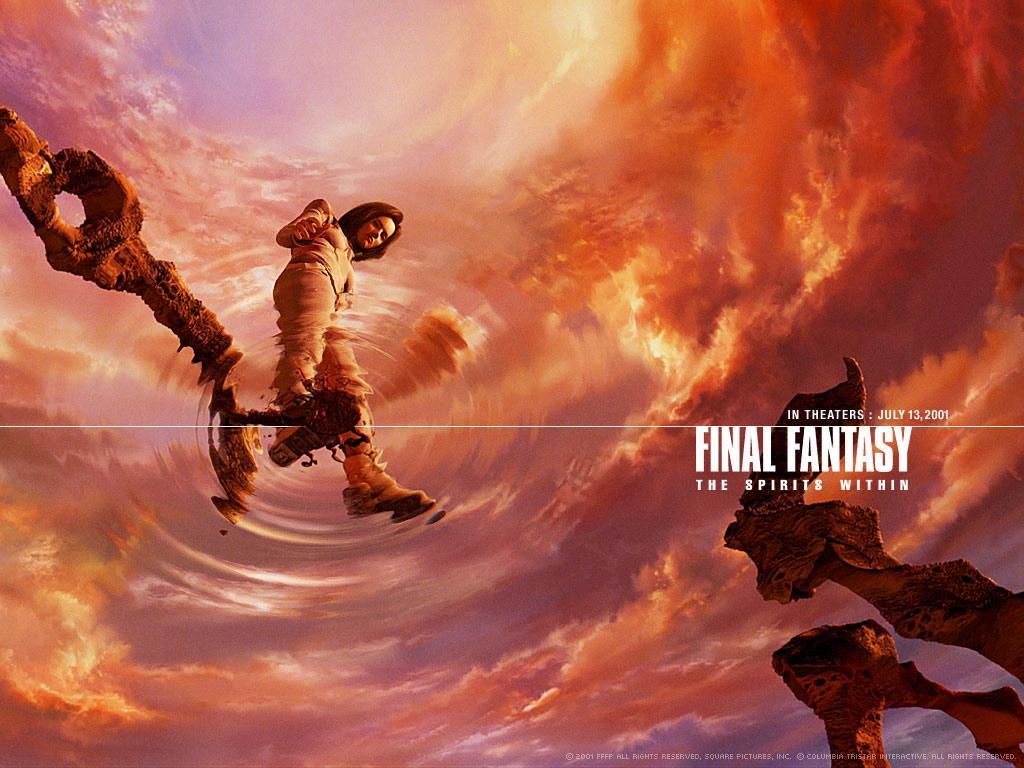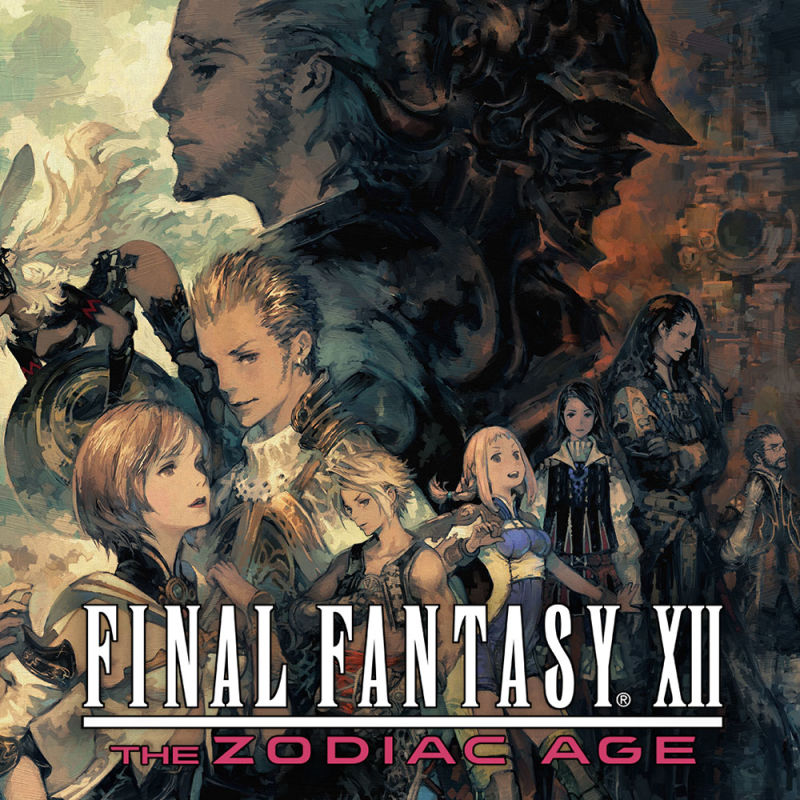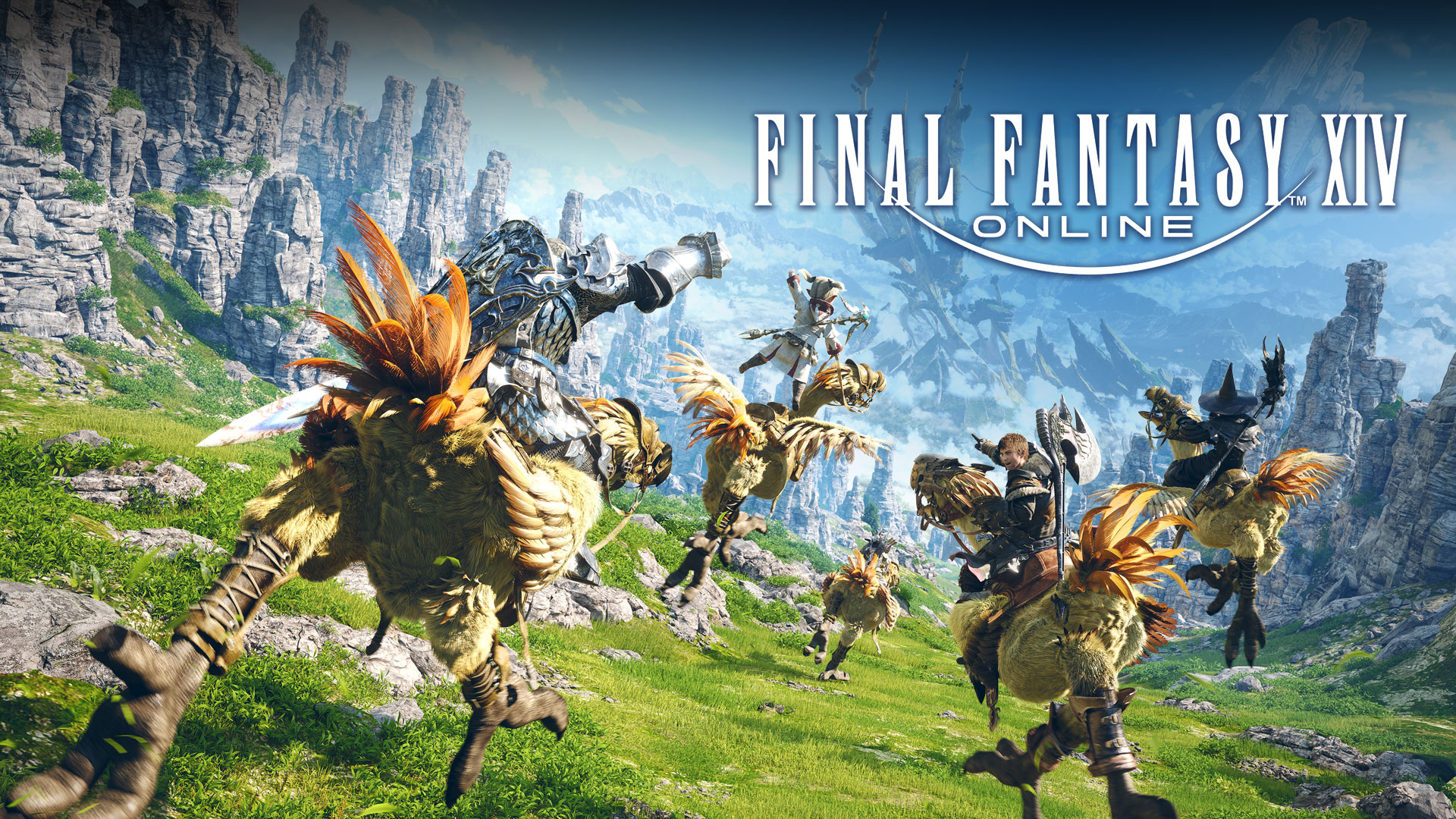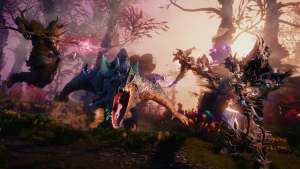The Final Fantasy series is one of the most celebrated franchises in gaming history. With its beginnings in 1987, the series not only helped shape the role-playing game (RPG) genre but also cemented itself as a cultural phenomenon. Developed and published by Square Enix (formerly Squaresoft), Final Fantasy has continually pushed the boundaries of what RPGs can achieve, from storytelling and gameplay to cutting-edge visuals and musical compositions.

The original Final Fantasy was created as a last-ditch effort to save the then-struggling Squaresoft. Released for the Nintendo Entertainment System (NES), the game drew inspiration from Dragon Quest but established its own identity through ambitious world-building, strategic combat, and a grand narrative. Despite being a relatively simple RPG by modern standards, it laid the foundation for the franchise's success.
Story and World-Building
The narrative follows the Warriors of Light, four adventurers tasked with saving the world from an elemental imbalance caused by four fiends. Players embark on a journey across a vast overworld, visiting towns, solving mysteries, and defeating powerful foes. The story, while straightforward, hinted at the deep and intricate storytelling that the series would later become known for.
The game introduced staples of the franchise, such as airships, Chocobos, and a fantasy setting blending magic with advanced technology. Its world design encouraged exploration, with hidden caves, treasures, and optional boss fights.
Gameplay
Final Fantasy introduced the iconic turn-based combat system that became a defining feature of the franchise. Players could select character classes like Fighter, Black Mage, White Mage, and Thief, customizing their party to suit their strategy. Battles required careful planning, as magic points and items were limited.
Level progression was rewarding, as characters grew noticeably stronger, unlocking new spells and equipment. Dungeons were labyrinthine, requiring players to think critically about resource management.
Visuals and Sound
For its time, Final Fantasy boasted impressive 8-bit graphics, with detailed character sprites, vibrant overworld maps, and unique enemy designs. Nobuo Uematsu's soundtrack was a standout feature, with tracks like the "Prelude" and "Victory Fanfare" becoming iconic pieces of gaming music.
Impact
The game was a massive success, selling millions of copies and pulling Squaresoft out of bankruptcy. It established the company as a major player in the gaming industry and set the stage for an ever-expanding series.
The Evolution of Final Fantasy

Final Fantasy II (1988)
Final Fantasy II was a bold departure from the original, introducing a unique leveling system where characters' stats improved based on how they were used. For example, taking damage increased HP, and casting spells improved magic power. The story was also more character-driven, focusing on a group of rebels fighting against an oppressive empire.
While the experimental mechanics divided fans, the narrative depth and emotional moments—such as the death of key characters—hinted at the storytelling potential of the series.
Final Fantasy III (1990)
Returning to a more traditional RPG structure, Final Fantasy III introduced the job system, allowing players to switch character classes and customize their party. This added strategic depth and replayability, as players could adapt their team to suit different challenges.
The game also expanded the world, with larger dungeons, more complex puzzles, and an enhanced story about restoring balance to the crystals. Its job system became a beloved feature that would reappear in future titles.
Final Fantasy IV (1991)
The fourth installment, originally released as Final Fantasy II in North America, marked the series' leap to 16-bit graphics on the Super Nintendo Entertainment System (SNES). It introduced the Active Time Battle (ATB) system, blending real-time and turn-based combat.
The narrative was more dramatic and character-focused, following Cecil, a dark knight seeking redemption, as he confronts personal demons and a global threat. Themes of love, betrayal, and sacrifice elevated the storytelling to new heights.
Final Fantasy V (1992)
Building on the success of its predecessors, Final Fantasy V refined the job system, offering even more customization options. Players could mix and match abilities, creating powerful hybrid characters.
The game’s story, while lighter in tone, explored themes of friendship and environmental responsibility. It was praised for its engaging gameplay and freedom, though it initially received less attention outside Japan.
Final Fantasy VI (1994)
Widely regarded as one of the greatest RPGs of all time, Final Fantasy VI delivered an epic story with a massive cast of characters, each with unique backstories and gameplay abilities. The game’s villain, Kefka, remains one of the most iconic antagonists in gaming history.
The blend of steampunk and fantasy aesthetics, combined with a moving narrative about rebellion, hope, and humanity’s resilience, cemented its legacy. The introduction of non-linear segments and a world that could be reshaped by player actions added depth.
Final Fantasy VII (1997)
Final Fantasy VII catapulted the franchise into mainstream success. Released on the PlayStation, it was the first game in the series to feature 3D graphics and pre-rendered backgrounds. Its cyberpunk setting, complex characters, and mature themes resonated with a global audience.
The story follows Cloud Strife and his companions as they battle the corrupt Shinra Corporation and the enigmatic Sephiroth. The Materia system allowed deep customization, and mini-games like snowboarding and Chocobo racing added variety.
Final Fantasy VII became a cultural phenomenon, selling over 10 million copies and solidifying RPGs as a dominant genre.
Final Fantasy VIII (1999)
Final Fantasy VIII took a more realistic approach, with character designs and a world inspired by modern aesthetics. The story centers on Squall Leonhart and his journey from a stoic loner to a hero who learns to rely on others.
The game introduced the Junction system, allowing players to customize stats by equipping magic spells. While divisive, it showcased the series' willingness to experiment.
Final Fantasy IX (2000)
Final Fantasy IX was a return to the franchise’s roots, celebrating the series’ fantasy origins. Released for the PlayStation, it featured a more lighthearted tone, medieval-inspired environments, and a story that blended charm with deep emotional moments.
The game’s protagonist, Zidane Tribal, embarks on a journey filled with self-discovery, friendship, and love. Each character brought their own unique abilities, allowing for diverse party combinations. The inclusion of Active Time Events (ATEs) let players experience side stories that fleshed out the characters and world.
The title was praised for its rich story, whimsical visuals, and a soundtrack that evoked both nostalgia and wonder.
Final Fantasy X (2001)
The first Final Fantasy on the PlayStation 2, Final Fantasy X introduced full 3D environments and voice acting, making it a technological milestone for the franchise. Set in the world of Spira, the game follows Tidus, a blitzball player who becomes embroiled in a pilgrimage to stop a cycle of destruction caused by the monstrous Sin.
The game replaced the ATB system with the Conditional Turn-Based Battle (CTB) system, allowing for more strategic combat. The Sphere Grid system offered a fresh approach to leveling up, providing players with control over character progression.
The game’s emotional narrative, particularly the relationship between Tidus and Yuna, is remembered as one of the series’ most impactful. Its sequel, Final Fantasy X-2 (2003), continued the story, offering a more lighthearted tone and a unique job-changing system during combat.
Final Fantasy XI (2002)
Breaking from tradition, Final Fantasy XI was the series' first foray into the massively multiplayer online role-playing game (MMORPG) space. Set in the expansive world of Vana'diel, players created custom characters and embarked on adventures in a shared online universe.
With a focus on teamwork, players could join parties to tackle dungeons, fight massive bosses, and participate in large-scale events. The game introduced multiple expansions, adding new areas, jobs, and stories.
While divisive among fans of the single-player entries, Final Fantasy XI garnered a loyal player base and proved the franchise’s adaptability.
Final Fantasy XII (2006)
Final Fantasy XII offered a radical departure from its predecessors, featuring an open-world design and a real-time battle system called the Gambit system. Players could program AI behaviors for party members, creating a hybrid of strategic and action-oriented combat.
Set in the politically charged world of Ivalice, the game follows a group of characters caught in a war between empires. The story, while less personal, was praised for its mature themes and expansive lore.
Its freedom in exploration and customization made it a standout title, though its slower pacing divided fans.
Final Fantasy XIII Trilogy (2009-2014)
Final Fantasy XIII marked the series’ debut on high-definition consoles (PlayStation 3 and Xbox 360). It introduced a highly linear structure, with a heavy focus on cinematic storytelling. The game follows Lightning and her companions as they fight against fate in the world of Cocoon.
While visually stunning and featuring a fast-paced battle system called Paradigm Shift, the game’s linear design drew criticism. Two sequels, Final Fantasy XIII-2 (2011) and Lightning Returns (2013), expanded the narrative and introduced time mechanics, offering more player freedom.
Final Fantasy XIV (2010/2013)
After a disastrous initial launch in 2010, Final Fantasy XIV was rebuilt from the ground up as Final Fantasy XIV: A Realm Reborn (2013). This MMORPG transported players to Eorzea, a world brimming with lore, rich environments, and a strong narrative.
With expansions like Heavensward, Stormblood, Shadowbringers, and Endwalker, the game became a critical and commercial success. Its community-driven approach and constant updates cemented it as one of the best MMORPGs of all time.
Final Fantasy XV (2016)
Final Fantasy XV took the franchise in a bold new direction, combining an open-world structure with action-based combat. The story follows Prince Noctis and his friends on a road trip to reclaim his kingdom.
The game’s “bromance” dynamic and real-time combat received praise, though the fragmented storytelling was criticized. Regular updates and DLC expanded the world and narrative.
Final Fantasy XVI (2023)
The latest installment embraces darker themes, inspired by medieval fantasy. Its action-oriented gameplay, mature narrative, and stunning visuals show the franchise’s continuous evolution.
Franchise Overview
Game Genre
Role-Playing Game (RPG) with spin-offs exploring action, strategy, and MMORPG genres.
First Release Year
1987
Platforms
Nintendo, PlayStation, PlayStation 2, PlayStation 3, PlayStation 4, PlayStation 5, Xbox, PC, Mobile, and more.
Ratings
Most mainline entries score between 8/10 and 10/10. Titles like Final Fantasy VII, Final Fantasy VI, and Final Fantasy XIV have achieved legendary status.
Single-Player or Multiplayer
Primarily single-player, though Final Fantasy XI and Final Fantasy XIV are MMORPGs.
Developer and Publisher
Developed by Square Enix (formerly Squaresoft).
Game Awards
The series has won countless accolades, including Game of the Year awards, BAFTAs, and recognition for its music and storytelling.
Is It Worth Playing Today?
The franchise remains essential for RPG enthusiasts. Classics like Final Fantasy VII and modern hits like Final Fantasy XIV showcase the series’ adaptability and enduring appeal.
Our Personal Rating
9.5/10. The Final Fantasy franchise is a masterclass in storytelling, innovation, and world-building, earning its place as a cornerstone of gaming.
Table of Final Fantasy Games and Genres
| Game Title | Release Year | Genre | Gameplay Modes | Notable Features |
|---|---|---|---|---|
| Final Fantasy | 1987 | Role-Playing Game (RPG) | Single-Player | Class-based combat, elemental crystals storyline |
| Final Fantasy II | 1988 | RPG | Single-Player | Stat progression based on usage, character-driven story |
| Final Fantasy III | 1990 | RPG | Single-Player | Introduction of the job system, expanded exploration |
| Final Fantasy IV | 1991 | RPG | Single-Player | Active Time Battle (ATB) system, dramatic storytelling |
| Final Fantasy V | 1992 | RPG | Single-Player | Advanced job system, environmental themes |
| Final Fantasy VI | 1994 | RPG | Single-Player | Ensemble cast, steampunk setting, nonlinear gameplay |
| Final Fantasy VII | 1997 | RPG | Single-Player | 3D graphics, Materia system, iconic characters |
| Final Fantasy VIII | 1999 | RPG | Single-Player | Junction system, modern aesthetics |
| Final Fantasy IX | 2000 | RPG | Single-Player | Medieval fantasy themes, Active Time Events |
| Final Fantasy X | 2001 | RPG | Single-Player | Voice acting, Sphere Grid system, Conditional Turn-Based Battle (CTB) |
| Final Fantasy X-2 | 2003 | RPG | Single-Player | Job-changing during combat, sequel to Final Fantasy X |
| Final Fantasy XI: Online | 2002 | MMORPG | Multiplayer | Open-world exploration, party-based combat |
| Final Fantasy XII: The Zodiac Age | 2006 | RPG | Single-Player | Gambit system, open-world design |
| Final Fantasy XIII | 2009 | RPG | Single-Player | Paradigm Shift battle system, linear structure |
| Final Fantasy XIII-2 | 2011 | RPG | Single-Player | Time-travel mechanics, nonlinear storytelling |
| Lightning Returns: Final Fantasy XIII | 2013 | RPG | Single-Player | Time management, customizable combat |
| Final Fantasy XIV: A Realm Reborn | 2010 (relaunched in 2013) | MMORPG | Multiplayer | Expansions with rich stories, class-based gameplay |
| Final Fantasy XV: Royal Edition | 2016 | Action RPG | Single-Player | Open-world design, real-time combat, road trip themes |
| Final Fantasy XVI | 2023 | Action RPG | Single-Player | Mature narrative, fast-paced combat |

